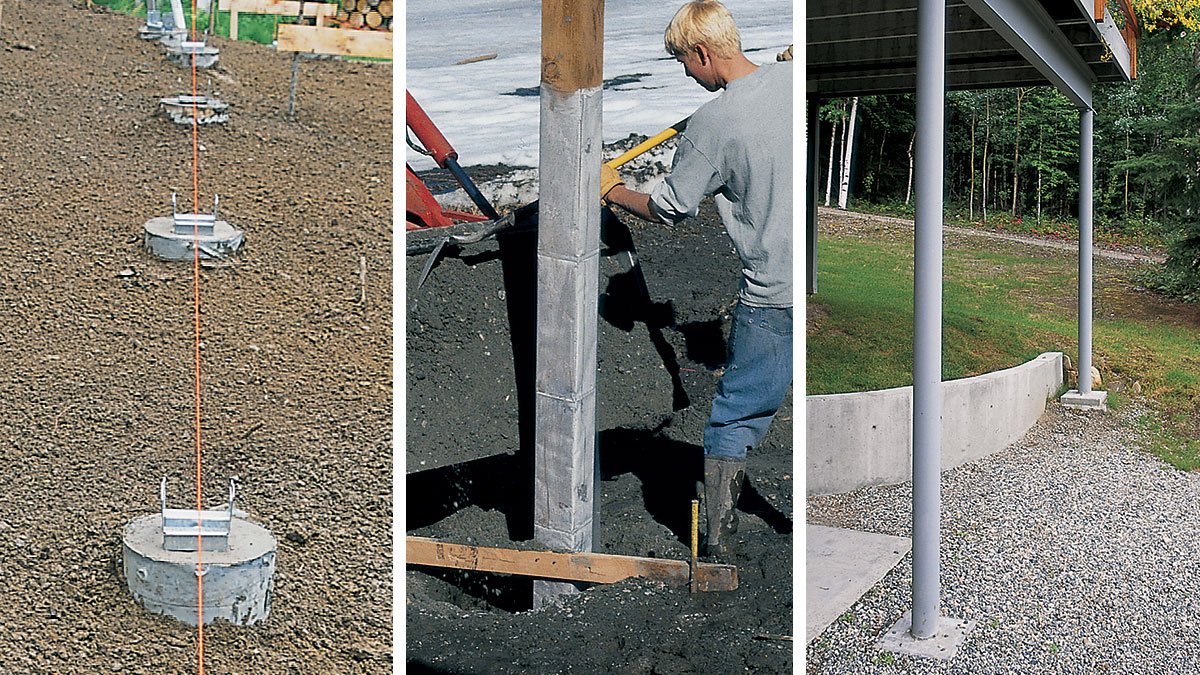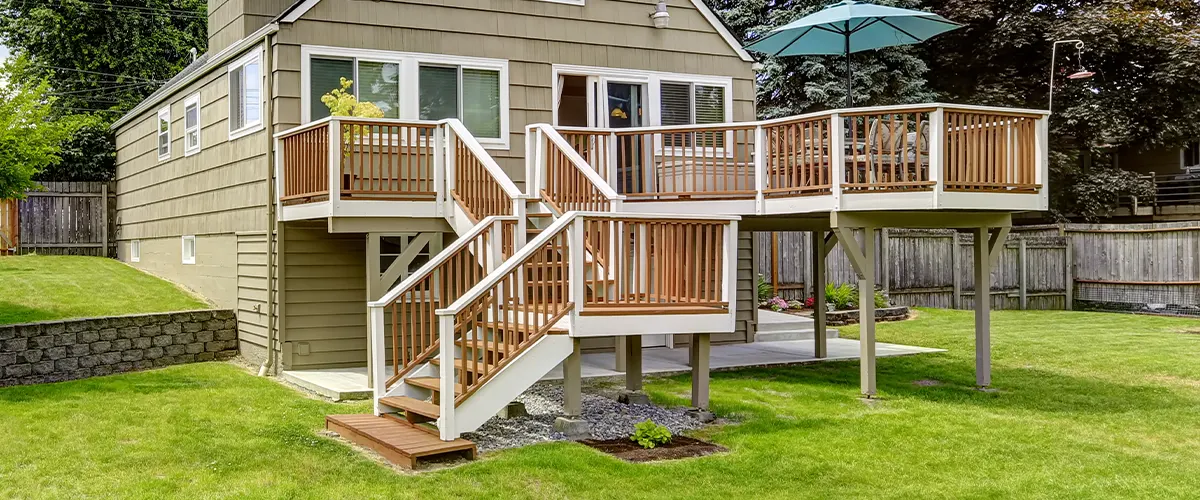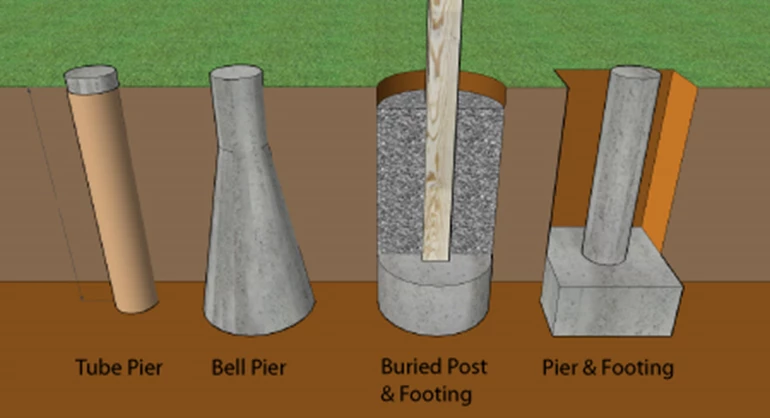Safeguard Structures, Lasting Impressions: Mastering the Art of Deck Footings Installation
Wiki Article
Expert Tips for Installing Deck Footings to Support Your Outdoor Area
When it comes to constructing a deck, one of the most important components to consider is the installation of proper grounds. These footings are the foundation upon which your outside space will relax, providing security and support for years to find. What exactly does it take to install deck footings correctly? In this conversation, we will certainly explore experienced suggestions and strategies that can aid guarantee a successful and long lasting deck installation. From picking the right sort of footings to staying clear of typical mistakes, we will certainly offer you with the expertise and insights you require to with confidence embark on your deck-building journey. Allow's dive right in and discover the key to a solid and long-lasting outside space.Relevance of Correct Deck Footings
Correct deck footings are vital for ensuring the stability and durability of your exterior room. When creating a deck, it is vital to take note of the foundation on which it will rest. Deck footings supply the essential support for the entire structure and aid disperse the weight uniformly - Deck Footings. Without strong and appropriately mounted footings, your deck might end up being unstable, causing safety dangers and pricey repairs.
In addition to stability, appropriate deck grounds additionally add to the long life of your outdoor room (Deck Footings). Grounds that are designed and created to endure the elements and dirt problems in your location will assist prevent the deck from clearing up or moving over time. By ensuring the grounds are effectively sized and installed, you can decrease the danger of damages to the deck structure, extending its life-span and reducing the need for pricey repairs or substitutes

Choosing the Right Kind Of Grounds
When selecting the suitable sort of grounds for your deck, it is very important to think about elements such as soil conditions, local building codes, and the general design of your outside room. The kind of footing you pick will play an important function in ensuring the stability and longevity of your deck.One typical kind of footing is the concrete ground. Concrete grounds are ideal for many dirt conditions and offer excellent support for decks.
In some cases, you may require to utilize specialized footings, such as heap grounds or deep structures, if you are building a huge or multi-level deck. These footings are created to disperse the weight of the deck over a bigger location, making certain stability and protecting against resolving or sinking.
Before picking a kind of ground, it is necessary to consult local building regulations and guidelines to ensure conformity. Furthermore, take into consideration the design and planned use your outdoor space. Aspects such as the dimension, shape, and load-bearing needs of your deck will influence the kind of footing that is most suitable.
Preparing the Ground for Footing Setup
To appropriately prepare the ground for footing installation, it is important to evaluate the soil problems and take needed steps to make certain stability and toughness of the deck. The initial step is to dig deep into the area where the footings will certainly be set up.Once the area has actually browse around here been dug deep into, the next step is to small the dirt. This can be done utilizing a plate compactor or by utilizing a hand meddle. Compacting the soil helps to get rid of any kind of spaces or air pockets, which can bring about working out and instability with time.
After condensing the soil, it is necessary to lay a layer of crushed rock or smashed rock at the end of the excavation. This will supply drainage and help to stop water from merging around the grounds, which can cause disintegration and instability.
Step-by-Step Overview to Setting Up Deck Footings
After properly preparing the ground for footing installment, the following action is to start the procedure of setting up deck grounds. This step-by-step guide will offer you with a clear understanding of just how to install deck footings for your outdoor space.Establish the area: Begin by noting the settings of the deck footings utilizing risks and string. Ensure that the locations line up with the style and design of your deck.
Dig the holes: Make use of a message opening digger or an auger to dig the openings for the footings. The deepness and diameter of the openings need to be in accordance with regional building codes and the particular needs of your deck style.
Degree the holes: Use a degree to make sure that the openings are dug to the correct depth and are level with each other. (Deck Footings)
Add crushed rock: Place a layer of gravel at the bottom of each hole to enhance drainage and prevent the wood from decaying.
Place the footings: Put the footings right into the holes, making certain they are level and plumb. Use a level and a determining tape to make certain precision.
Secure the grounds: Put concrete into the openings around the footings, filling them to the top. Use a message level to ensure the grounds continue to be degree as the concrete sets.
Permit time for healing: Allow the concrete treatment according to the maker's directions before continuing with the deck construction.
Common Blunders to Stay Clear Of During Footing Installment
One essential element to take into consideration throughout the setup of deck footings is preventing common blunders that can endanger the security and longevity of your exterior area. While deck grounds might seem like a easy and uncomplicated component of the building and construction procedure, neglecting certain elements can cause costly fixings and prospective security dangers down the line.
Furthermore, overlooking to set up correct water drainage actions can cause water to build up around the footings, bring about rot, degeneration, and the eventual weakening of the deck's structure. Additionally, making use of the incorrect kind of footing material or stopping working to adequately safeguard the footings can endanger their architectural honesty.
To avoid these mistakes, it is necessary to seek advice from with an expert or follow industry guidelines to guarantee proper ground setup. By doing so, you can guarantee the security and long life of your outside area, giving a satisfying and secure atmosphere for several years ahead.
Verdict
Finally, setting up correct deck grounds is crucial for the stability and longevity of your outside room. By choosing the appropriate kind of footings and appropriately preparing the ground, you can guarantee a strong foundation for your deck. Following a detailed guide and avoiding usual blunders during footing setup will certainly further enhance the longevity and safety and security of your deck.Proper deck grounds are vital for guaranteeing the stability and longevity web of your outside room. The grounds serve as a connection between the ground and the deck, enabling the weight of the deck and its owners to be spread evenly into the dirt.One typical kind of footing is the concrete footing. Insert the grounds: Put the grounds right into the holes, making certain they are level and plumb. Protect the grounds: Put concrete right into the holes around the grounds, filling them to the top.
Report this wiki page